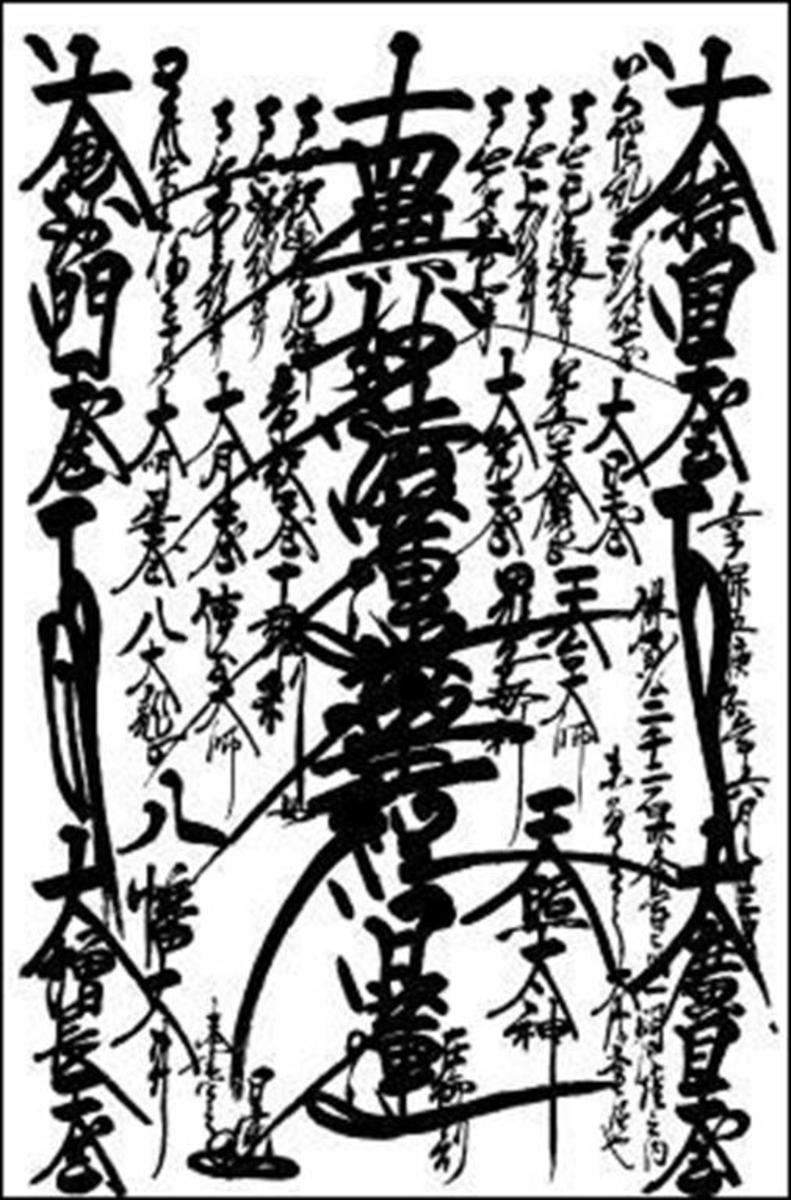Chanting Mantra Meditations
There seems to be a lot of confusion when people see the words 'mantra' and 'chant'. So I will start out with explaining the difference between the two. A mantra is a series of sounds (which can be words, syllables, or phrases), while chants are the actual repetition of the mantras (whether they are said aloud, whispered, or spoken with the inner voice).
Mantras are sound vibrations that can help to not only clear the mind of debris, but can also help in achieving a spiritual connection with the Higher Self. Mantras are said to be words and sounds that have a powerful meaning and in some traditions are said to be magical in nature. Mantras tend to have strong energies that vibrate through the body when it's repeated over and over. The first mantras are believed to have been written in Sanskrit and originated in India. In the Sanskrit language, mantra is formed from two words. Man which means mind, and tra which means a tool. So a literal translation would be 'a tool of the mind.'
When first practicing the mantra can be spoken aloud, and as you concentrate you can begin a mental repetition. If you chant the mantra mentally, you can chant anywhere and anytime. This can be a wonderful way to not only regain, but also to maintain, an inner peace during stressful times. When our mind is clear and calm, we are able to make decisions that are better for us and the world around us.
Two Basic Types of Chanting
- Japa Chanting is where a person will chant alone, sometimes with a set of japa beads. To meditate with japa beads, you hold them in your dominant hand. Hold the first bead with your thumb and middle finger. Chant the complete mantra, and then move your fingers to the next bead (using the same fingers). One 'round' of chanting is when you have moved through the entire 108 beads. You do not count on the 'main or Krishna' bead. You then turn the beads around and continue chanting on the beads in the opposite direction. Chanting and using the beads engages the sense of touch in the meditation process which can help you to concentrate even more on the mantra. When using a mantra and beads, many people find that their minds are more easily satisfied and do not stray as much. With japa chanting, it is recommended to start out with one or two rounds of chanting a day. You can then gradually work your way up to what is considered the recommended minimum for serious chanters, which is sixteen rounds. ~ You can either buy or make your own japa beads. To make your own japa beads, you will need 109 beads, some strong nylon thread, and a decorative bead (a bead with a tassle on the end is commonly seen) which is optional, but pretty. Tie a knot about five inches from the end of a long piece of nylon thread. You can either string the 108 beads on the nylon thread continuously, or you can tie a know in between each bead. This simply depends on a persons preference. When this is completed, you string both ends of the nylon thread through the 109th bead (which is called the Main or Krishna bead. You then tie a knot and cut off the extra nylon thread. You now have your own japa beads! * When buying your japa beads, make sure that they are a comfortable fit. Your hands might cramp up with beads that are too small or too large for your hands, or you discover that since your beads are not the right shape or not smooth enough that they make your fingers sore. * When making your own japa beads, you do have the ability to use different colors and sizes of the beads and nylon thread, so have fun with it! ~
- Kirtana Chanting is where a group of people come together, and can be accompanied by music, musical instruments, and/or hand-clapping. Sometimes one person will lead the chant, with the others responding, and sometimes the group will simply chant together. This is said to be a 'supercharged' meditation process, because in addition to hearing yourself chanting, you also benefit by hearing the chanting of others. Music and musical instruments are certainly nice to have, but are definitely not needed. You can also sing the mantra to any melody and/or clap your hands.
Easy Mantras
A few easy mantras for beginners to start out with include the following. There are many mantras out there that are beautiful, some of which can take a little learning.
- Om (or Aum) Mantra - The Om is very important in the Hindu religion. The symbol is considered sacred because it represents the Brahman, or the Source of Life. This symbol represents Divinity and the Oneness of all creation. It is also considered the matriarch of all other mantras. Usually when chanting with Om, you inhale deeply and as you exhale you chant Oooommmmmmmmmmmm.
- Hu Mantra - The Sufi believe this to be the sound of Divinity. This is chanted the same way that Om is. Inhale deeply, and on the exhale Huuuuuuuuuuuuuuuuuu (sounds like hue).
- Om Shanti Mantra - Shanti means 'peace'. The mantra is Om Shanti Shanti Shanti Om (Om Shon-tay Shont-tay Shon-tay Om).
- The Mani Mantra - The mantra is Om Mani Padme Hum (Om Man Nee Pad May Hum). When translated this mantra is 'Praise to the Jewel in the Lotus'. The Buddhists believe that when you chant this mantra, either silently or aloud, that you are invoking the attention and blessings of Chenrezig, who they believe to be the embodiment of compassion.
- So Haun Mantra - The mantra is So Haun (So Hawn). This mantra is also called the Universal Mantra or the Mantra of Breath. One way to do this is to silently say "Sooooooooo" on the inhale and "Haaaaauuuuuunnnnnn" aloud on the exhale.
Chanting Mantras
This can be a new and fun way to do meditation for people that can not seem to sit in silence. I also recommend checking YouTube and finding videos with people chanting mantras. This can be an excellent way for beginners of chanting mantras to see and hear how it's done.
I hope that you try out this method of meditation and see how it works for you.
Namaste







